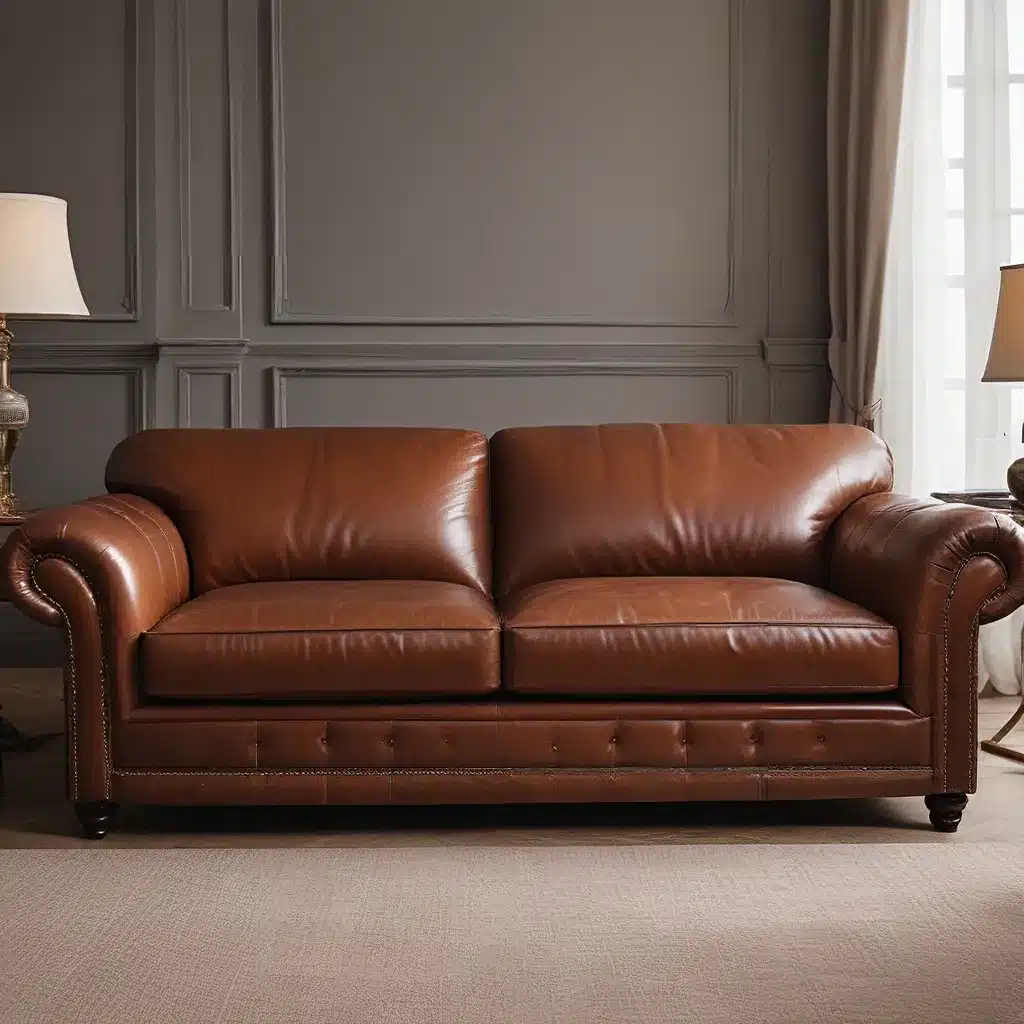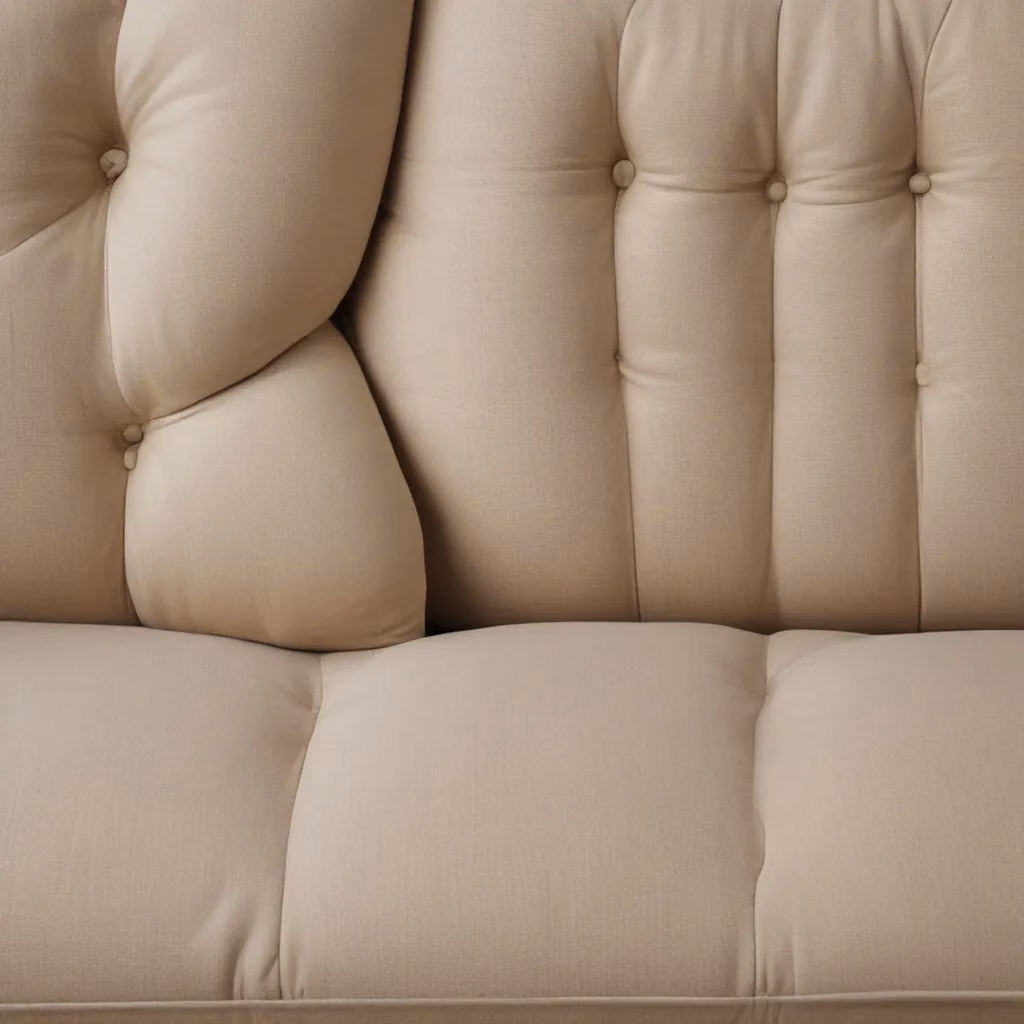
As the proud owner of a luxurious leather sofa, I know firsthand how important it is to keep it in pristine condition. Whether you’ve recently invested in a Chesterfield or are the proud caretaker of a family heirloom, proper leather sofa maintenance is key to ensuring it looks and feels its best for years to come.
The Beauty and Complexity of Leather
Leather is a natural, breathable material that develops a beautiful patina over time. Much like our own skin, it requires regular care and attention to stay healthy and vibrant. This is especially true for high-end, aniline-dyed leather furniture, where the dye has penetrated the entire material rather than just the surface.
One of the biggest misconceptions about leather is that it’s indestructible. In reality, it can be quite delicate and susceptible to damage from environmental factors like extreme temperatures, direct sunlight, and even the oils from our skin. Neglecting proper leather care can lead to cracking, fading, and other unsightly issues.
Mastering the Art of Leather Cleaning
Cleaning a leather sofa isn’t rocket science, but it does require a delicate touch. The key is to use the right products and techniques to gently remove dirt, grime, and stains without damaging the material.
Step 1: Dust and Condition
Start by giving your leather sofa a light dusting with a dry, clean cloth. This helps remove surface-level dirt and debris. Once that’s done, apply a leather conditioner or serum to keep the material soft, supple, and moisturized. Be sure to work the product in gently with a clean cloth, avoiding any harsh rubbing or scrubbing.
Step 2: Tackle Stains
Inevitably, accidents happen, and your beloved leather sofa may fall victim to the occasional spill or stain. The good news is that with the right approach, you can often remove these blemishes without too much trouble.
For light stains, try a soapy, damp cloth, gently blotting the affected area. Avoid letting the leather get too wet, as this can lead to mildew and other issues. For tougher stains, like ink or grease, a cotton swab dipped in rubbing alcohol can be surprisingly effective. Just be sure to test in an inconspicuous area first.
Step 3: Restore Shine
After cleaning and conditioning, you may want to give your leather sofa a little extra shine. A leather cream or polish can help revive the lustre and provide a protective barrier against future wear and tear. As always, test the product in a small, hidden area before applying it to the entire surface.
Preventing Leather Damage
Of course, the best way to care for your leather sofa is to avoid damage in the first place. Here are a few tips to keep in mind:
Watch the Weather: Extreme temperatures and direct sunlight can wreak havoc on leather, causing it to dry out and crack. Try to position your sofa away from windows, vents, and other sources of heat or cold.
Be Mindful of Oils: Oils from our skin, food, and other sources can leave unsightly stains on leather. Avoid eating or drinking on your sofa, and be sure to wipe up any spills immediately.
Train Your Pets: Curious cats and playful pups can quickly turn your leather sofa into a makeshift scratching post. Teach your furry friends to stay off the furniture, or invest in some protective covers.
Rotate Usage: Just like any piece of furniture, your leather sofa will wear down over time with regular use. Try to rotate where you and your guests sit to distribute the wear and tear more evenly.
The Importance of Proper Maintenance
Maintaining a luxury leather sofa may seem like a daunting task, but with the right approach, it can be a relatively straightforward process. By regularly dusting, conditioning, and cleaning your leather furniture, you can keep it looking its best for years to come.
And let’s be honest, there’s something truly special about sinking into a well-cared-for leather sofa, the material supple and inviting beneath you. It’s a feeling that can’t be replicated by any mass-produced, synthetic alternative.
So, take the time to give your leather sofa the attention it deserves. With a little love and attention, your investment will continue to be a source of comfort, style, and enjoyment for you and your family for many years to come. And who knows, with a bit of luck, it might even become a cherished heirloom for generations to come.
Remember, the team at Sofa Spectacular is always here to help if you have any questions or concerns about caring for your leather furniture. Visit our website at sofaspectacular.co.uk to learn more about our products and services.
Frequently Asked Questions
How often should I condition my leather sofa?
As a general rule, you should condition your leather sofa every 3-6 months. This helps to keep the material supple and prevent drying and cracking over time.
Can I use household products to clean my leather sofa?
While you can use some household items like white vinegar and baking soda for spot cleaning, it’s best to stick to specialized leather care products for the best results. These are formulated to gently clean and condition the material without causing any damage.
How do I prevent my leather sofa from fading?
Exposure to direct sunlight is the primary culprit for leather fading. Try to position your sofa away from windows and use curtains or blinds to block UV rays. You can also apply a leather protector to help shield the material.
What should I do if my leather sofa gets scratched?
For minor scratches, you can try using a leather serum or cream to help smooth and conceal the imperfection. However, for deeper cuts or tears, it’s best to consult a professional leather repair specialist to ensure the damage doesn’t worsen over time.
Can I use mink oil on my leather sofa?
While mink oil is sometimes recommended for leather care, it’s generally not advised for use on furniture. The greasy, oily nature of mink oil can actually cause more harm than good, leading to discoloration and staining. Stick to purpose-made leather conditioners and cleaners instead.



